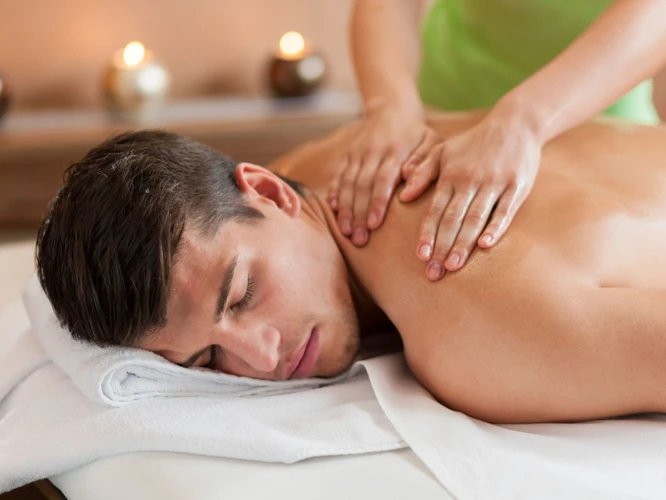Massaging someone with diabetes may seem like a harmless and beneficial activity, but it is actually dangerous for those with the condition. Massage can increase the risk of serious complications, such as low blood sugar levels, infections, and nerve damage. In this article, we will discuss why you shouldn’t massage someone with diabetes and what you need to know when considering the practice.
Contents
What Is Diabetes?

Diabetes is a chronic condition in which the body is unable to properly regulate levels of blood glucose (sugar) due to a lack of insulin production or an inability to use insulin properly. It is characterized by high blood glucose levels, which can lead to serious health complications, such as heart disease, stroke, kidney disease, vision loss, and nerve damage. People with diabetes are at an increased risk of developing certain types of infections and may experience slow healing of wounds.
Why is diabetes a contraindication to massage? People with diabetes are more prone to infection, so massage may increase their risk of developing an infection. Massage can also cause an increase in blood glucose levels, which can be dangerous for those with diabetes. Additionally, people who are diabetic may have nerve damage, which can be aggravated by massage. Therefore, it is important to consult a doctor before getting a massage if you have diabetes.
Why Can’t You Massage Someone With Diabetes?

Risk of Infection
Massage therapy can increase the risk of infection for people with diabetes. This is because massage can cause the skin to become more sensitive and prone to infection. Massage can also cause friction on the skin, which can damage the skin and cause infections. Additionally, massage can cause increased blood flow, which can increase the risk of infection. Therefore, it is important to be aware of the risk of infection if you are considering massage therapy for someone with diabetes.
Side Effects of Medication
Massage therapy may also cause side effects from certain medications that a person with diabetes may be taking. For example, some medications can cause increased sensitivity to massage, which can lead to increased risk of infection or irritation. It is important to talk to your doctor about any medications you are taking before having a massage.
Lower Blood Sugar Levels
Massage can also cause the body to release hormones that can affect blood sugar levels. Massage can cause a decrease in blood sugar levels, which can be dangerous for people with diabetes. Therefore, it is important to monitor blood sugar levels while receiving a massage.
Nerve Damage
Massage can also cause nerve damage in people with diabetes. This is because massage can cause pressure on nerves, which can cause damage to the nerves. Therefore, it is important to be aware of the risks of nerve damage when considering massage therapy for someone with diabetes.
In conclusion, it is important to understand the risks and side effects of massage therapy when considering massage therapy for someone with diabetes. It is best to consult with a doctor or physical therapist before having a massage to ensure that it is safe for the person with diabetes. Additionally, it is important to understand how to massage a diabetic person to prevent any potential complications.
How To Massage A Diabetic Person
Use Gentle Pressure
When massaging a diabetic person, it is important to use gentle pressure. Applying too much pressure can cause discomfort or even pain. It is recommended to use light to medium pressure when massaging a diabetic person.
Avoid Massaging Sensitive Areas
It is important to avoid massaging sensitive areas, such as the area around the eyes, the back of the neck, or the feet. Massaging these areas can cause discomfort or even pain.
Be Careful of Pressure Points
When massaging a diabetic person, it is important to be careful of pressure points. Pressure points can cause discomfort or pain and can lead to complications.
Monitor Blood Sugar Levels
It is important to monitor the blood sugar levels of a diabetic person when massaging them. If the blood sugar levels become too low or too high, it can lead to complications. It is recommended to check the blood sugar levels before and after a massage.
Frequently Asked Questions
What are the Risks of Massaging Someone with Diabetes?
- Increased Blood Sugar Levels: Massage can increase the circulation of blood in the body, which can cause an increase in the blood sugar levels of an individual with diabetes.
- Increased Risk of Skin Infections: Individuals with diabetes are at a higher risk of skin infections due to their decreased ability to fight off infections. Massage can increase the risk of infection by exposing the skin to bacteria and other pathogens present in the massage oils or the environment.
- Hypoglycemia: Massage can cause a drop in the blood sugar levels of an individual with diabetes, leading to a condition known as hypoglycemia.
- Increased Risk of Injury: Massage may cause an increase in the circulation of blood to certain areas of the body, which can put an individual with diabetes at an increased risk of injury.
- Increased Risk of Complications: Massage can put an individual with diabetes at an increased risk of developing complications such as nerve damage, eye damage, kidney damage, and heart disease.
What type of massage is best for a person with diabetes?
Swedish Massage: Swedish massage is the most common type of massage and it is beneficial for people with diabetes as it helps to relax the muscles, improve circulation and reduce stress. This type of massage is gentle, and it is a good choice for diabetics who are looking for a relaxing, soothing massage.
Trigger Point Therapy: Trigger point therapy is a type of massage that focuses on relieving pain and tension in specific areas of the body. This type of massage can be beneficial for people with diabetes as it helps to reduce stress and improve circulation.
Deep Tissue Massage: Deep tissue massage is a more intense type of massage that is beneficial for people with diabetes as it helps to reduce muscle tension and improve circulation. This type of massage is more intense than Swedish massage, so it is important for diabetics to make sure that their massage therapist is experienced in providing deep tissue massage.
Sports Massage: Sports massage is a type of massage that can be beneficial for people with diabetes as it helps to reduce stress and improve circulation. This type of massage can help to reduce muscle tension and improve flexibility, which can help with diabetes management.
Hot Stone Massage: Hot stone massage is a type of massage that uses heated stones to massage the body. This type of massage is beneficial for people with diabetes as it helps to reduce stress and improve circulation. The heated stones can also help to reduce pain and muscle tension.
Are there any massage techniques that should be avoided for someone with diabetes?
Yes, some massage techniques should be avoided for those with diabetes. These include:
- Deep tissue massage
- Trigger point massage
- Sports massage
- Reflexology
- Myofascial release
- Vibration massage
These types of massage are too intense for people with diabetes, as they can cause increased blood glucose levels. Additionally, people with diabetes are more prone to skin infections, and these massage techniques may increase the risk of infection. Therefore, it is important to discuss any massage technique with your doctor before proceeding.
Are there any special considerations for massaging someone with diabetes?
Yes. Massaging someone with diabetes requires extra care and consideration due to the potential complications that can arise. Here are some considerations to keep in mind when massaging someone with diabetes:
- Be aware that diabetes can cause nerve damage, which can reduce the person’s sensation in certain areas of their body. Massage therapists should take extra care to ensure that they do not injure the person while massaging.
- Be aware that diabetes can cause dehydration, so massage therapists should ensure that the person stays properly hydrated throughout the massage.
- Diabetics are more likely to suffer from circulatory problems, so massage therapists should avoid any massage techniques that could restrict blood flow.
- Be aware that some diabetics may experience higher than normal blood sugar levels. Massage therapists should monitor the person’s blood sugar levels during the massage and immediately discontinue the massage if necessary.
- Be aware that diabetes can cause skin problems, such as dryness or infections. Massage therapists should take extra care to ensure that the person’s skin is not damaged during the massage.
Are there any other health risks associated with massaging someone with diabetes?
Massaging someone with diabetes carries risks other than those already discussed. For example, massage can temporarily increase blood sugar levels, potentially leading to complications. Massage can also cause low blood pressure or dizziness in individuals with diabetes, which can be dangerous. Additionally, massage can cause the body to release toxins, which can be harmful for individuals with diabetes, who may be more susceptible to their effects. Lastly, massage can cause skin abrasions or tears, which can be dangerous for individuals with diabetes, as they are more prone to infection.
Conclusion
Massaging someone with diabetes should be avoided as it can cause further complications. It is important to be aware of the potential risks and side effects of massage on diabetes and to consult with a healthcare provider before attempting to massage someone with diabetes. Additionally, diabetics should be monitored closely for signs or symptoms of adverse reactions due to massage.

